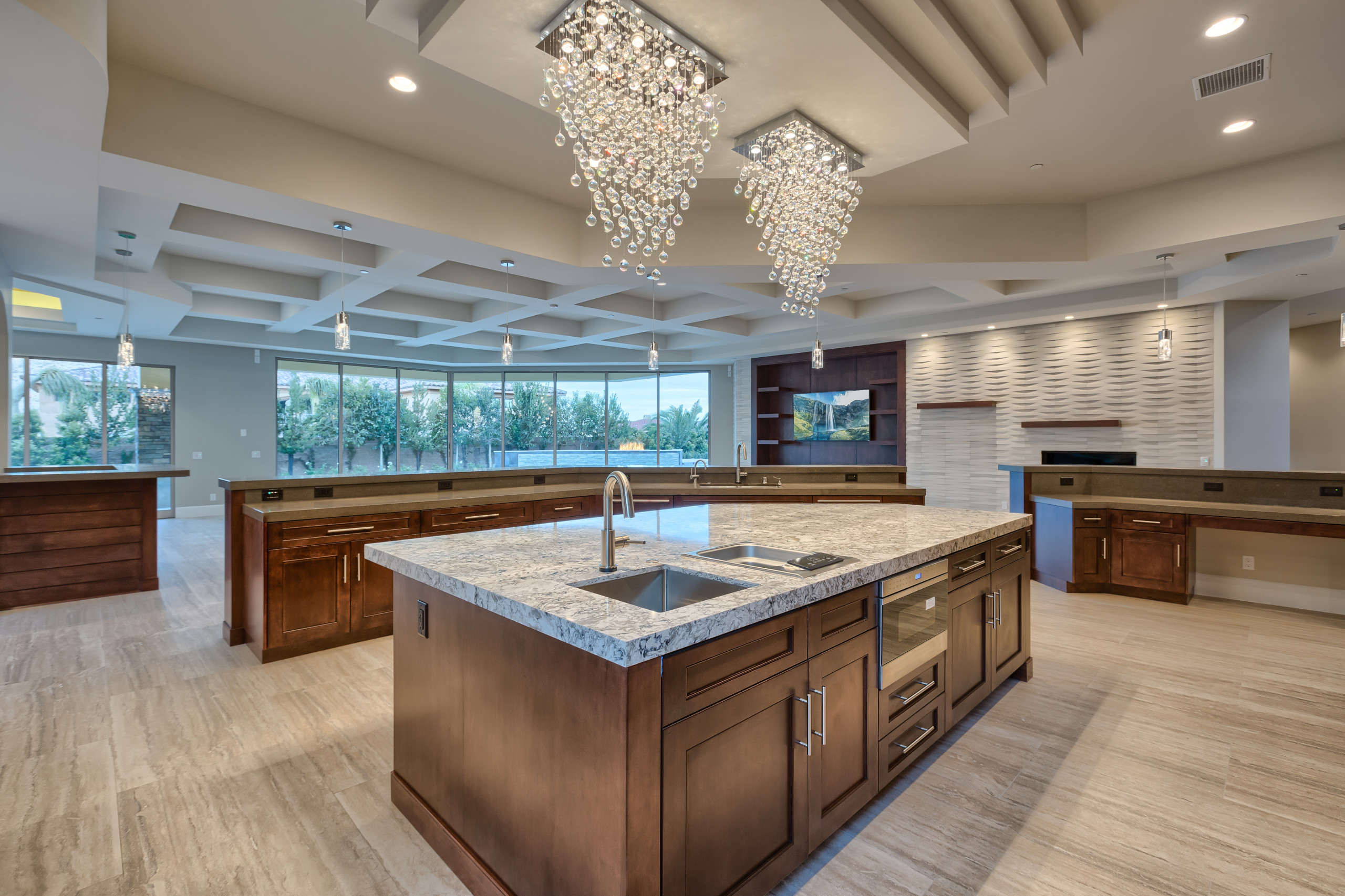Lighting Your Space

Lighting is a critical component to a space be it natural or artificial and in this segment I am going to cover why it is important to understand how each light fixture illuminates and performs within that space and how to layer lighting to create a mood in the space.
Some of those keys elements will be covering are:
- Where does the natural light come from and its direction?
- How high are the ceilings? Is there a pitch ceiling, beams and soffits?
- How will you function in this space? - Kitchen, Bathroom, Laundry, Closet
- Types of Light Fixtures: Ceiling Mount, Wall Mount, Flush Mount, Semi Flush, Table Top. Decorative (Accent), Task (cabinet lighting, desk top), Ambient (general lighting), Recessed lighting, LED Light Mirrors
- Type of Bulbs - incondecent, edison, LED (2,000-5,000 kelvin) - Outdoor bulbs (Color Temperature cool - warm) Most Common types of light bulbs
- Incandescent
- Fluorescent (Standard)
- Fluorescent (Compact)
- Halogen
- LED
- Smart
NATURAL LIGHT vs. ARTIFICIAL LIGHT:
Let's begin with what the meaning of natural light or to better describe how the sunlight lightens the room. How many windows do you have? What direction does your room face? Is there a skylight? Natural light will clarify the true coloring within your space. Artificial light will be created from light fixtures and the light source, such as bulbs, it illuminates from. Artificial light can change the shades drastically with finishes, materials and surfaces. Especially, paint colors. Improper lighting will make areas look dull and drabby or cast shadows. A good example of this is if you have ever re-painted and you refer back to the swatch asking yourself "that is not the color I chose...it looks so different against the sample swatch". You will want to try to balance, within a space both sources of natural and artifical lighting and this will depending on how many windows, doors or skylights you may have. If there are none, you will need to layer the lighting to create this effect.
CEILING HEIGHTS & PITCH CEILINGS:
Ceiling heights and pitch ceilings will need to be crucial just before you purchase those light fixtures because you may need additional cord, wiring, down rods or fixture with chains that can easily tilt and swing due to the degree of the pitch. You don't want to wait until and electrician is at your home installing your fixtures and you have missing parts. This will add to his hourly cost and take days or weeks to reschedule. Here are just some of the things I have experienced in regards to lighting fixtures that you will need to be aware of:
Ceiling Heights: 10' / 12' / 15' feet ceilings
8 ft cord & wiring is standard length on chandiliers and pendants. Additional wiring
and cord is available with certain manufacturers.
Ceiling heights that are 8' ft or under may require the shortening of the wire/cord. A
license electrician will know how to this onsite. Refer to the below option about sizing
requirements for these types of ceiling.
Ceiling Fans: Extra down rods will be required for ceilings over 12' feet high to create
the proper circulation of air.
Pitch Ceilings: This type of ceiling only works with certain lite fixtures that will have
chain or tilt option within the canopy. Ceiling fans will also need to have this
requirement. Know before you purchase.
SPACE and FUNCTION:
Prior to selecting and purchasing your lite fixtures, ask yourself "How will you function in this space"? For example, your Kitchen. You will need lots of layered lighting such as recessed lighting or ceiling cans, decorative lighting and cabinet lighting either below or above your wall cabinets for added impression within the room. Now, I understand that not all homes have recessed lighting, in this case, you can adjust appropriately, the added cabinet lighting for low cost. I personally added battery puck lights under my cabinets for this added a feature. This light package also came with a remote and dimmable options. I chose this type of fixture, because during monsoon seasons and stormy weather, the power has a tendency to go out and this gives my kitchen a power source of illumination without electricity. I recall I spent maybe $45.00 for (9) puck lites in a package. Also, adding those same puck lites on the upper portion of the wall cabinet, and placement centered off the wall, you can create a "scalloped effect" which looks stunning and adds a little ambience to the room.
What about your bathroom? For us ladies, there is nothing worse than shadows when trying to apply makeup or performing your daily beauty routine. Ceiling cans are the worst for this and if a vanity light has been installed at the wrong height - it will not brighten your face. This area may need wall mounted lite mirrors both small and large.
Another important space is your office. Added table top task lighting, ceiling lights, floor lamps is necessary if there isn't much natural light coming through windows.
Closets and Laundry areas need "bright" lighting fixtures. If you have the opportunity during a remodel or new build to install a natural lighting source, such as one of those solar tube skylights...do so!
TYPES OF LIGHT FIXTURES:
The industry refers to light fixtures as mounted options for example ceiling mount which is anything hanging (Chandeliers, Pendants, Fans), Wall Mounted (Wall Sconces), Semi - Flush (Fixtures with short stem/rod) and Flush Mount (tight to ceiling). The industry also refer to lighting fixtures as decorative (meaning accent lighting), general lighting (ambient), task lighting (table top), recessed lighting (ceiling cans). This will help you determine the product when you go to search websites and want to quickly eliminate options you do not need.
Best Options for Space:
Chandeliers & Pendants: decorative lighting for Kitchens, Entry & Stair Ways, Dining Rooms, Bedrooms, Offices and Bathroom Suites.
Wall Mounted: Wall Sconces, Exterior Lights and LED Lite Mirrors in bathrooms.
Semi - Flush: Hallways, Entry's, Pantry and Closets.
Flush Mount: Garages, Laundry, Closets, Pantry's.
Table-Top: Office, Living Room, Seating Areas
Depending on the space, the ceiling height, wall height will determine which fixture and size is appropriate. For example, a kitchen niche table that has a diameter of 48"-56" inches - would best be suited for a chandelier or semi flush light fixture that is approximately 24" - 27" in diameter. A dining room table ( 8-10 chairs 96" - 115") that is more linear would be suited for either (2) 24" inch chandelier or pendants or (1) - 36" Island longer island light. The height will vary based on the elevation or ceiling height. Wall sconces are another tricky height variance which could be shorter if near the bed or higher if the fixture has an arm or will be installed in a hallway. Exterior wall sconces also have height and depth requirements. Bathroom vanity lights, depending on the shade can be sometimes turned upward or downward.
Always review the specifications of the fixture and be sure to configure the depth. Sizes will be listed by width x height x depth.
BULBS FOR FIXTURES:
Now that you understand the types of fixtures and there functions, understanding what bulb to use and the right color temperature will be the key to illumination. Too many times I have seen the wrong light bulb in a fixture that causes havoc on the eyes and can be very bad for the fixture itself. One example where I have seen this is in ceiling cans, where the consumer has put an exterior flood light in the placement where a incandescent bulb should be. This is also the same for table top lamps, where fluorescent bulb, which casts purple blue light, was placed instead of an incandescent bulb. Ceiling fans with light kits is another critical fixture where proper bulbs need to be placed. DO NOT use candelabra or edison bulbs. If you have pendants or chandelier with colorful glass or fabric shades - the shade will never look right with the wrong bulb.
Since LED bulbs have taken over the industry, understanding the temperature is important. Cool verses Warm - and kelvin instead of wattage. A temperature of 3,000 - 3,700 is best for general lighting.
Halogen bulbs are best in ceiling track lite kits or recessed cans because they produce a very white bright lite. You will see this type of lighting in commercial settings such as retail stores and art galleries to show the brilliance of gemstone and diamond jewelry and colorful art.
The newest bulb to the marketplace is a smart bulb and is an internet-capable LED light bulb that allows lighting to be customized, scheduled and controlled remotely. Smart bulbs are among the most immediately successful offerings in the growing category of home automation and Internet.
Again, read the specifications in regards to the light fixture and make sure the proper bulb and its wattage are always used.
OUR RADIO SHOW:
Local Prescott radio station KQNA - Saturdays at 12:30pm (95.5 FM)
Weblinks for more references: (below)
The 6 Main Types of Light Bulbs in 2023 | REthority
